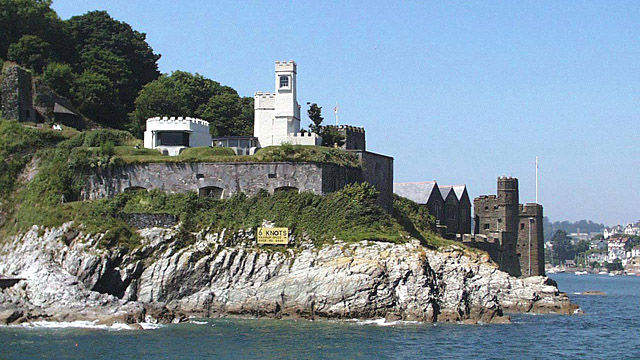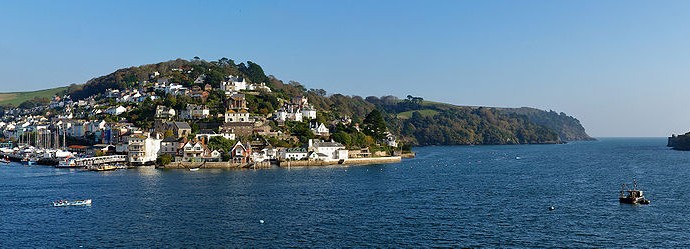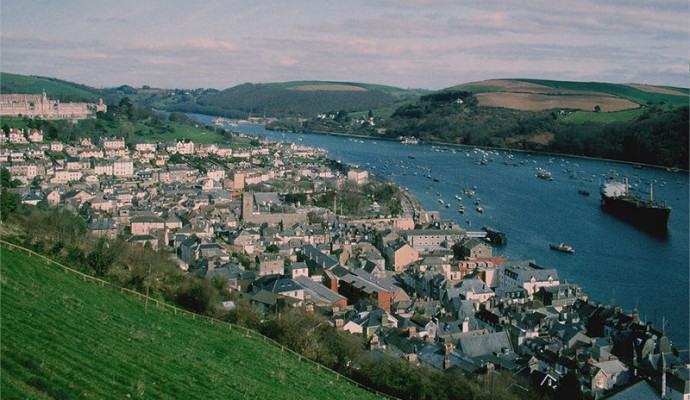Interesting information
Dartmouth Station has the unmistakeable architecture of a GWR railway station, although trains never reached here. The GWR’s Dart Valley line was originally planned to cross the river to Dartmouth, but the bridge was never built although the station was. Trains always terminated at Kingswear, although through tickets to Dartmouth could be purchased which included the ferry crossing.
The Quay was built in the 1580s. Prior to that the river had reached as far inland as the church. When the Quay was built it became Dartmouth’s principal river frontage. This was all changed in the 19th century when the Embankment was built to form the present riverside. The Boat Float was constructed at the same time to allow small boats to reach the Quay.
Smith Street is one of Dartmouth’s most attractive old streets. It is in fact the earliest street in Dartmouth to be recorded by name (in the 1200s). Its name derives from the medieval smiths and shipwrights who worked building and repairing ships here, when the river reached as high as this point.
The narrow streets, steep hills and numerous flights of steps give a feeling for what old Dartmouth would have been like. Above Town, aptly named, is an early suburb of Dartmouth. Along the road are a number of interesting and attractive houses, some originally the homes of wealthy merchants or ex-sea captains.
Warfleet creek was once the site of a busy trading quay. It has also been the site of a ropewalk, limekilns (their remains still exist), a paper mill and a pottery. Check the information board just after the creek for more details.
There are superb views along the coast westward to the prominent landmark of Start Point and its lighthouse.
The mouth of the Dart appears with the outline of the daymark beyond. The river is quite difficult to spot out at sea, hence the importance of the daymark for navigation.
The path passes high above some almost hidden coves, the haunt of peregrine falcons who hunt these cliffs.
This little ravine and the cave it ends in can make a spectacular show on a windy day or at high tide. At any time, however, this is a superb spot for a rest or to contemplate nature. The pools in the rocky platform here are also fascinating.
On the opposite bank can be seen Kingswear Castle. It was built around 1500, just after the larger Dartmouth Castle, to be passed a little later, on this side of the river. At one time a chain was stretched across the river between the two castles if danger threatened.
The castle dates largely to the 1480s. It is said to be the first castle in England designed to be used with artillery. The white tower now used for the castle shop and ticket office is more recent. It was built in the mid-19th century as a lighthouse to guide shipping into Dartmouth Harbour.
Although usually regarded as being closely associated with the neighbouring Dartmouth Castle, the origins of the Church are older, being medieval. There is a theory that its site is a very early Christian one, and it is dedicated to a Celtic saint. The present church dates largely to around 1640.
The house, Gunfield, so called because the Royal Artillery once used to practice their firing across the river.
The road becomes South Town. Although now largely lined by Victorian villas built by wealthy 19th century Dartmothians, it was actually the town’s earliest suburb, being first mentioned in 1328. It was included within the borough in 1463. It also offers superb views up the river, the Britannia Naval College prominent above the town.
Bayards Cove Castle is a little later than Dartmouth Castle, built in the 1530s. It was most unusual in being built by the town Corporation, rather than by the King or a powerful lord who were the usual castle builders at that time.
The original quay area for Dartmouth, was visited by the Pilgrim Fathers in 1620 en route for New England. Note the date of 1665 built into the cobbles. It is lined by picturesque old houses, including the Old Custom House.


